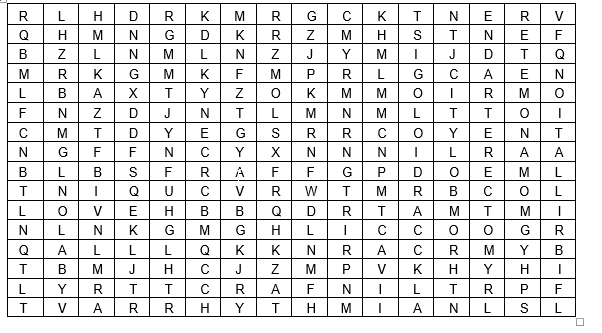The peripheral nervous system includes which of the following?
A. Brainstem and spinal nerves
B. Nerves, sensory receptors, and autonomic ganglia
C. Groups of myelinated axons called capsules or tracts
D. Only afferent neurons that convey information to the central nervous system
ANS: B
Rationale: The peripheral nervous system consists of all nervous system structures outside of the skull and spinal column. Myelinated axons, the white matter of the peripheral nervous system, are grouped together in nerves. Peripheral nerves convey both afferent and efferent information to and from the central nervous system. Collections of autonomic cell bodies, or gray matter, located in the periphery are termed ganglia.
You might also like to view...
Find and circle the answer for each definition in the word search puzzle

1. A specialist in studying the heart.
2. A localized widening of an artery.
3. An irregular heartbeat.
4. An abnormally slow heartbeat.
5. Surgical removal of the inner lining of an artery.
6. Abnormal quivering of the heart.
7. A decrease in blood pressure.
8. An area of tissue necrosis.
9. Drug that dissolves existing blood clot.
10. A blood pressure cuff.
The LPN working at a pediatrician's office is talking to the mother of a 6-year-old patient who takes imipramine (Tofranil). The nurse would include which of the following statements in the client teaching?
A. "Once your child starts taking this medication, her urinary tract infection should improve within a few days." B. "Avoid letting your child drink anything containing caffeine in the evening since it can irritate the bladder and increase bed-wetting." C. "This medication is given in the form of a patch that is changed once a week." D. "This medication acts on the loops of the kidney to alter the way fluid and electrolytes are exchanged."
The medical term for a slow heartbeat is:
A. tachycardia B. cardiomegaly C. bradycardia D. cardiomyopathy
Read the Hospital course below:Hospital CourseOn postop day 2, Ms. Cloud began complaining of increasing right ophthalmalgia. She was noted to be febrile to 102.2. Exam revealed conjunctival infection and edema. She was presumed to have postoperative endophthalmitis. Vitrectomy was performed under sterile conditions, and samples were sent to lab for culture. She was given intravitreal antibiotics. Over the next couple of days, her fever curve trended down and her WBC count improved. Cultures came back positive for S. epidermidis. Infectious disease was consulted; they recommended two weeks of IV therapy. A PICC line was placed and she was discharged with care instructions. According to this excerpt, which of the following statements is TRUE?
A. The patient received miotics. B. The patient was presumed to have laceration in her eye that was treated with surgery. C. The patient was afebrile. D. A vitrectomy was performed under extremely clean, germ-free condition. E. The patient complained of OS pain.